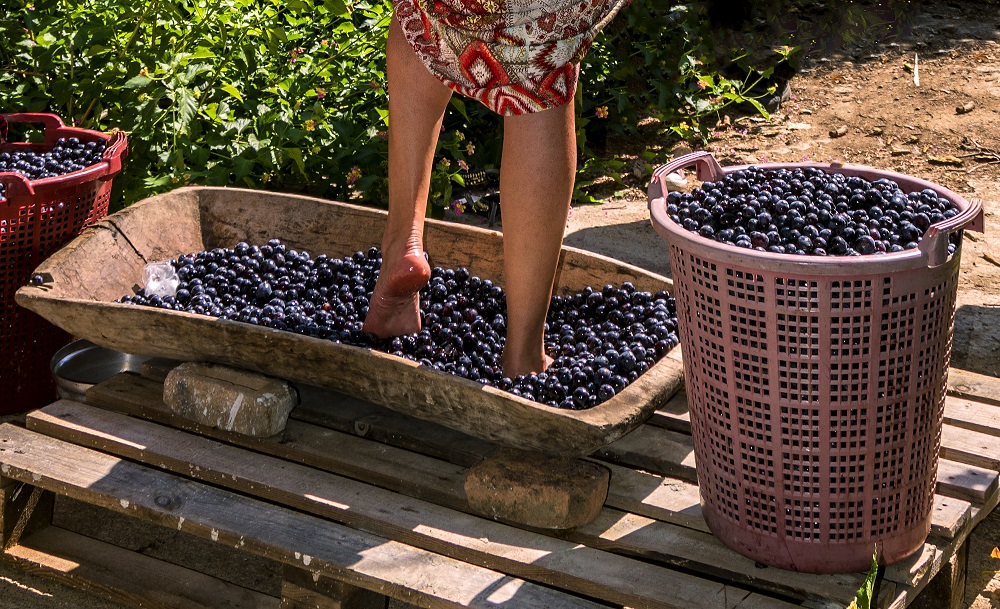Wine production is an art that has been around for centuries. Relying on nature for the majority of the process, wine making has remained an incredibly lucrative industry due to the supply and demand.
With so many choices available, there are many methods that can determine the flavor and quality of the wine. However, no matter what kind of wine you make, there are five key stages that go into the wine making process.
These are: harvesting, crushing and pressing, fermentation, clarification and then aging and bottling. It is how these steps are carried out that will determine the overall quality of the finished product. So whether you are making red or white wine, be sure to follow these steps so you can make the best wine possible.
How to make wine
1. Harvesting
Harvesting is the first step in the wine making process and is simply when the grapes are selected and picked for the wine. What makes grapes the perfect fruit for wine is that it is able to sustain a suitable amount of sugar all year round which helps it to yield the alcohol.
This is due to the requisite acids and tannins needed to make consistent tasting wine on a regular basis. This therefore means that the wine is made in the vineyard as the quality is determined by the quality of the grapes which need to be harvested at an ideal time when they are physiologically ripe.
For larger companies, they use a combination of nature and scientific techniques to ensure that the grapes can be picked. A lot of smaller and higher end winemakers will ensure that the grapes are selected by hand to ensure that the wine is as natural as possible.
2. Crushing and pressing

The next step is probably the part of wine making that most people instantly think of when asked to think about the process. The crushing and pressing step is when the grapes are squashed into a juice.
Traditionally, this used to be done by stomping on the grapes which is something that many vineyards allow visitors to do but most rely on machines for time efficiency and hygienic reasons.
The crushing process has played a huge part in the history of wine making and for centuries, harvest dances took place in barrels where men and women would stomp on the grapes whilst dancing.
This helped contribute to the romantic connotations that are often associated with wine. However, with machinery, the romance isn’t totally lost.
As well as being sanitary, it also helps to provide a more consistent taste and means that the winemaker doesn’t have to add as many preservatives.
If you are making white wine then you will need to press the must after crushing in order to get rid of any seeds and skins. This helps prevent any unwanted color from the skin of grape from seeping into the wine and helping it to maintain its crisp and clean appearance.
Red wine, on the other hand, doesn’t need any intervention as it relies on all parts of the grape including the skin to influence the taste and color as well as helping it to develop during the next step – fermentation.
3. Fermentation
This step is arguably the most important step in the wine making process. Fermentation is when the wine is left to ferment within 6 to 12 hours and combine with the wild yeasts in the air.
In wineries that are clean and in natural environments, this is a great process and helps to produce a fuller flavor in the wine. However, a lot of larger companies prefer to intervene at this stage to speed up the process which is done by inoculating the natural must.
This is when any natural or wild yeast is killed and then a new strain of yeast is introduced to create a more consistent flavor. Through the fermentation process, the sugar is converted to alcohol and the wine is produced.
How long the wind needs to ferment is dependent on the amount of the sugar in the wine and the fermentation techniques. Whereas some wines may require a 10 day fermentation period, others may need a month or more.
For wines fermented in cooler conditions, a 10% alcohol level is ideal whereas wine fermented in hotter temperatures should have an alcohol content of around 15%.
4. Clarification
The penultimate step is clarification which is when the wine is transferred to racking or siphoning from a tank or barrel in order to remove any solids at the bottom of the fermenting tank.
If desired, this is when filtering and fining may be done as well. Filtration is done by filtering the wine in order to catch solids and strip the wine of any life where fining is when substances are added to the wine to provide more clarity.
Substances often added include egg white and clay as well as other compounds that may precipitate dead yeast cells out of the wine. The fully clarified wine is then racked into another vessel and ready for the final stage of aging.
5. Aging and bottling
The final step of wine making is the aging and bottling process. Once clarification is complete, winemakers have the choice of either bottling the wine straightaway or allowing the wine to age before being sold and consumed.
There are advantages and disadvantages to either choice and neither one is right or wrong. For those who want an immediate result, bottling the wine immediately will mean that it can be given to the consumer and provide an immediate profit.
However, aging can enrich the flavors even further and helps to add value to the wine over time. Often, you’ll see many vintage wines and the reason they cost so much for a glass is because of the length of time they have been left to age.

